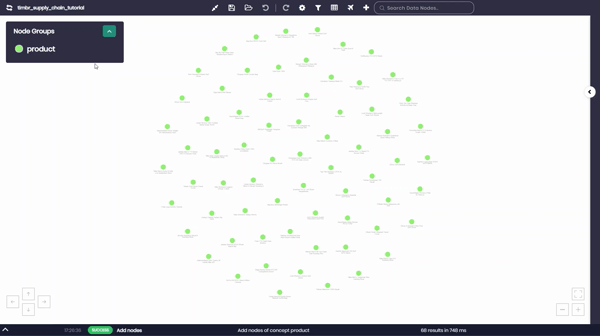ontologies for business intelligence
Power BI
Timbr integrates with Power BI to deliver faster dashboards, consistent metrics, and lower query compute costs.
Timbr replaces DAX with optimized SQL and exposes governed semantic models via DirectQuery, enabling high-performance, ontology-driven OLAP analytics with reusable cubes, hierarchies, and measures, shared seamlessly across BI tools.
Key Capabilities
Blazing Fast Dashboards
Accelerate Power BI dashboards with SQL-based measures.
Replace DAX
with SQL
Replace DAX with portable, debuggable SQL logic, converted from .bim files.
Connect via DirectQuery
Expose governed semantic models via DirectQuery, real-time, no duplication.
OLAP for
Power BI
OLAP-style analytics in SQL. Define cubes, hierarchies, and measures natively.
Optimize Cost-Performance
Powerful caching with 4-tier architecture: In-memory, SSD, data lake, and live DB.
Auto
Aggregations
Reduce compute with dynamic pre-aggregates at the concept level.
Smart Query
Execution
Hybrid live + cached query execution optimized based on context, freshness, and cost.
Compute
at Source
Push-down compute to source platforms (e.g., Databricks, Snowflake, SQL Server).
One Model
for All
Full support for MDX and Excel pivoting with the same underlying semantic model.
Universal
Semantic Layer
Share models across Tableau, Qlik, Looker, and any other JDBC/ODBC accessible tool.
What Every Power BI Team
Should Know
Proprietary BI vs Headless BI SQL Measures
At its core, Timbr takes a SQL-first approach to metric definition, while traditional BI tools like Power BI, Tableau, and Qlik use proprietary languages.
SQL Beats DAX Hands-Down for Power BI Metrics
For Power BI users, DAX measures have been the go-to approach for defining business metrics. However, as datasets and analytical demands grow, DAX’s limitations become apparent.
Enable Power BI
with advanced
capabilities
What happens when Power BI users need to connect large volumes of data distributed among varied sources and in different formats? Power BI options present significant challenges.
Why DirectQuery with Timbr Is the Most Efficient Choice
Power BI supports three connectivity modes: Import, Live Connection, and DirectQuery. When paired with Timbr, DirectQuery becomes the most cost-efficient and scalable approach:
| Mode | Cost Efficient | Real-Time | Best For |
|---|---|---|---|
| DirectQuery | YES | YES | Governed, live data with semantic models (Timbr) |
| Import | NO | NO | Small, static datasets needing in-memory speed |
| Live Connection | LIMITED | YES | Centralized Analysis Services models or Power BI Datasets |
With Timbr, DirectQuery allows Power BI to benefit from:
- Optimized SQL execution plans with semantic context.
- OLAP-like behavior via virtual cubes and measures.
- No duplication or refresh bottlenecks.
- Advanced caching and governed access control out of the box.
OLAP Capabilities
Timbr delivers the core benefits of OLAP cubes, hierarchies, and fast multidimensional analysis, without the limitations of traditional cube engines. Instead of relying on proprietary MOLAP/ROLAP systems, Timbr uses a modern, SQL-native approach to implement OLAP-style modeling and computation directly on your data platform.
Here’s how Timbr offers OLAP-like functionality:
- Define cubes, dimensions, and measures using standard SQL.
- Create semantic hierarchies for drill-down and roll-up operations.
- Use semantic auto-aggregations and a four-tier caching engine to serve queries from pre-aggregated projections.
- Support MDX endpoints for Excel and legacy pivoting tools.
- Push compute and aggregations down to your data warehouse for real-time performance.
While Timbr does not deliver “traditional” OLAP cubes, it achieves the same goals, governed, multidimensional analysis at scale, through virtual models and semantic intelligence. That’s why we describe Timbr as “OLAP-like”: it’s OLAP, reimagined for the cloud and SQL-first data stacks.
How it Works
Timbr connects to Power BI via ODBC or native SQL Server connectors using DirectQuery. Existing Power BI models—including relationships and DAX measures—can be imported and automatically translated into SQL-based semantic ontologies using Timbr’s conversion engine.
Timbr’s hybrid OLAP + ontology model supports cubes, dimensions, hierarchies, and semantic rules—all defined in standard SQL. Queries from Power BI are pushed down to the underlying database or served via semantic auto-aggregations and adaptive caching tiers, delivering low-latency performance with full governance.
